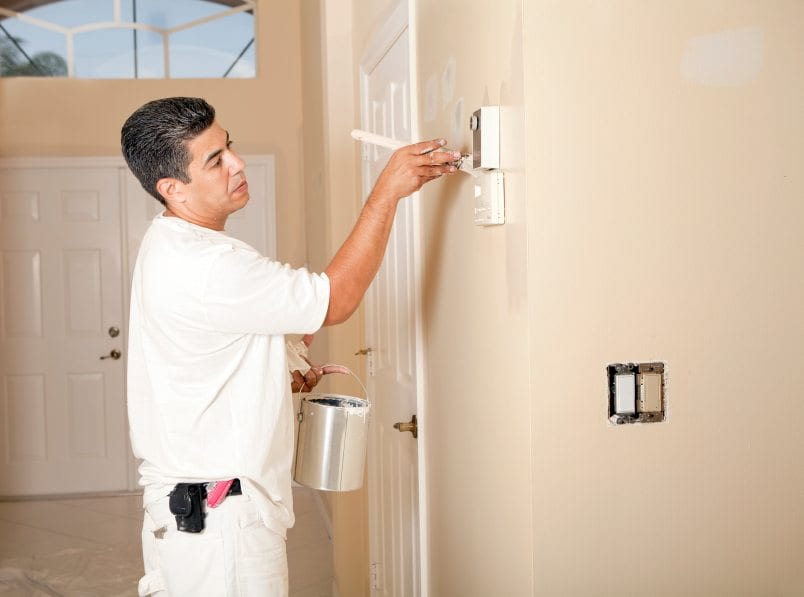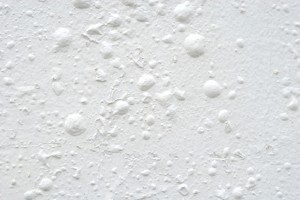
House painting: Repairing blistering paint
 Bubbling or blistering paint happens because the paint film is lifting from the underlying surface, or substrate.
Bubbling or blistering paint happens because the paint film is lifting from the underlying surface, or substrate.
These blisters will eventually “pop” and peel if they are not corrected. If the cause isn’t addressed, the interior paint will continue to blister. Follow these house painting tips for repairing blistering paint.
Causes of exterior blistering paint:
- Improper surface preparation (substrate is damp or dirty)
- Painting a hot surface in direct sunlight – the paint will dry too quickly and trap solvent vapor beneath the film
- Exposure to moisture either from dew, humidity or rain too soon after painting, primarily a problem with latex paints
- Moisture escaping through walls, primarily a problem with oil- and alkyd-based paints
- Applying oil- or alkyd-based paints over latex primer or paint
Most of these are easy to prevent by making sure the substrate is properly prepared, cleaned and dry, and by avoiding painting when dew, humidity or rain could affect a fresh coat of paint.
Improper ventilation can allow interior moisture to escape through walls. This may require installation of vent fans in particularly humid rooms (kitchens and bathrooms), or in extreme cases, a vapor barrier may have to be installed on either the interior or exterior surface of the walls. These situations are best diagnosed by building professionals who deal with extreme moisture issues regularly.
Causes of interior blistering paint:
- Surface is damp or wet
- Moisture is seeping into the home through exterior walls, primarily a problem with oil- and alkyd-based paints
- Exposure of latex bases to high humidity shortly after paint has dried
- Other moisture problem behind the walls, such as small plumbing leaks or pipes that are “sweating,” or small leaks in the roof, siding, window, etc.
Here, too, when it comes to interior house painting, most of these are easy to prevent or fix by making sure the substrate is clean and dry. Dry the air with vent fans, an air conditioner or a dehumidifier if you are painting on a very humid day. Any other sources of moisture must be removed. Fix leaks, consider installing vent fans, and/or remove and replace loose caulking around windows and siding.
Problem: How do I repair an exterior wall with blistering paint?
Solution
If the blisters go down to the substrate, you must first investigate and remove the source of the moisture for repairing blistering paint.
Topcoat blisters are typically simple environmental problems – it was humid or too hot when the wall was painted. Remove the blisters by first scraping them and then sanding until all rough edges are feathered smooth.
If you have to remove the paint all the way down to the bare substrate, apply a quality primer and allow it to dry thoroughly. Repaint with a quality exterior latex paint.
Interior house painting problem: How do I repair an interior wall with blistering paint?
Solution
After diagnosing and addressing the cause of the blistering paint, for repairing blistering paint remove the blisters in the same manner as above.
Use a lighter touch when scraping to avoid damaging more delicate drywall surface. After sanding, you may need to smooth the repaired area with spackle or drywall compound.
If so, make sure the patch is completely dry, sanded smooth, cleaned and primed. When the primer has dried, apply a touch-up coat with quality latex paint.

